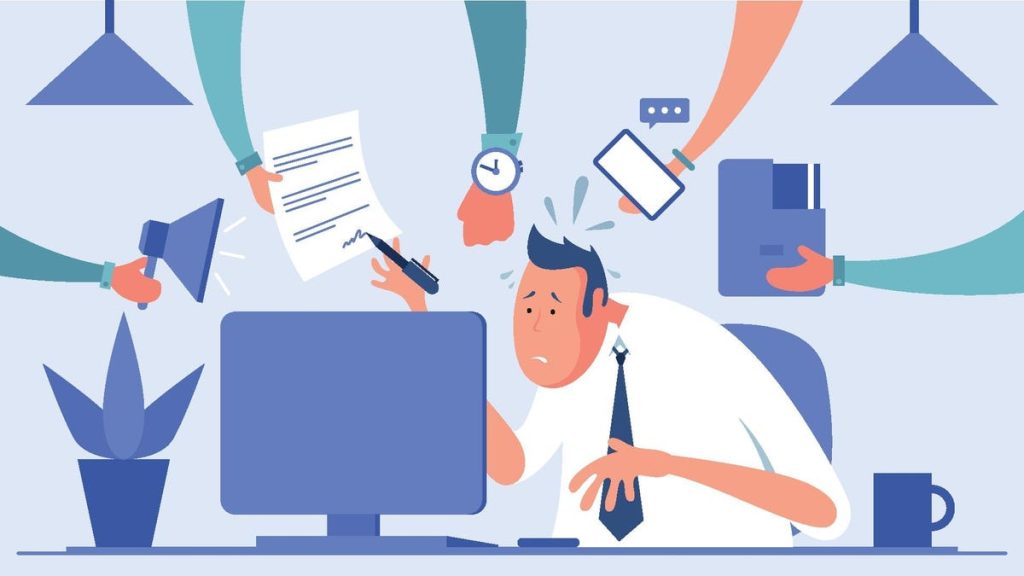Last month, a friend who is a Fortune 100 executive shared one of their largest frustrations, describing how they “are just hemorrhaging talent.” What’s more, she said that many of her peers at other large employers feel the same way. But they could not figure out why. It was a mystery.
So we dug into it. What we found are that the underlying reasons often sprawl beyond mere job dissatisfaction. In fact, our research has found that among these multifaceted reasons lies an overlooked yet increasingly prominent factor: our growing digital engagement.
After COVID, a heightened sense of needing to be “constantly on” drives a compulsion to reach for phones and other screens. This addiction is not only impacting our health but also our satisfaction and productivity at work.
A Personal Cost to Pay
At a personal level, recent data have now repeatedly shown that phones can be a huge distraction in work or private settings. Research suggests that frequent and prolonged engagement with our devices can be linked to decreased happiness, increased anxiety and stress for some people. Specifically for those that are already stressed and anxious in the first place. While we seek solace in our digital worlds, the unseen toll is heavy.
Take Heed Employers
Screen time is not just a personal matter. For employers, there’s a productivity cost as well. Studies indicate that the ‘always-on’ mentality, paired with the workplace distractions of endless Teams or Slack notifications, incoming text messages, and other notifications significantly disrupt focus and takes away from our cognitive capacities to do impactful work. The constant task-switching undermine productivity, taking a toll on both quality and efficiency of work.
Why Digital Wellness Matters
Recently, an employee-first company working in the health care sector named Juniper Communities collaborated with the Digital Wellness Institute’s research team to study how small changes in our digital habits can impact phone and screen time use.
Led by Dr. Sophie Janicke-Bowles, Director of Research at the Digital Wellness Institute, the study found that a 1-2 hour intervention (increasing awareness of digital wellness and encouraging micro changes in how we use our devices) can decrease phone usage by a whopping 16% (from around 4 hours of personal phone use per day on average to just over 3 hours). This result was statistically significant. In addition, this reduction in screentime seems to have reduced the amount of times people get interrupted at work from their devices.
Combined with prior research, we can infer that a decrease in screen time indirectly ties to improved mental health and increased productivity by reducing the opportunities for unnecessary interruptions and distractions from our phones. Change management is achievable by employers. Juniper Communities showed us how: By investing into Digital Wellness.
Embracing a New Dawn with Digital Discipline
How can leaders and organizations facilitate this transformation? By championing the cause of digital wellness. Recognize its correlation with employee productivity. Educate employees on nurturing better workplace habits around screen time and technology use. In doing so, we can minimize distractions, uplift spirits, and enhance productivity.
Here’s the road ahead for all:
Open Conversations: Create spaces for discussions on digital habits – and whether it is even considered at all. Collective dialogue can foster awareness towards a collective change.
Digital Affirmations: Adopt policies and practices that foster beneficial tech usage. Promote tools and resources to educate employees on how to achieve a healthier digital routine.
Reframe Digital Perception: Technology, when used judiciously, can be a boon. Cultivate a healthy digital environment from leaders to all employees. Get help and support as needed.
In an era where our screens can either be our allies or adversaries, the choice lies with us as individuals and with caring employers. With fearless positivity and intentional efforts, we can reframe our digital narratives. Employers who embrace digital wellness today more quickly realize a happier and higher productivity workforce tomorrow.
Read the full article here










